Laboratory Experiments on Reflected Gravity Currents and Implications for Mixing
Abstract
1. Introduction
2. Experimental Details
2.1. Experimental Design
2.2. Density Evaluation Using Non-Intrusive Image Analysis
3. Discussion
3.1. Visual Insights into Flow Development
3.2. Height Variations of the Dense Gravity Current
3.3. Mixing Induced by the Barriers: Fractional Area and Thorpe Length
4. Conclusions
Author Contributions
Funding
Data Availability Statement
Conflicts of Interest
References
- Simpson, J.E. Gravity Currents: In the Environment and the Laboratory; Cambridge University Press: Cambridge, UK, 1997. [Google Scholar]
- Cesare, G.D.; Schleiss, A.; Hermann, F. Impact of turbidity currents on reservoir sedimentation. J. Hydraul. Eng. 2001, 127, 6–16. [Google Scholar]
- Prather, B.E. Controls on reservoir distribution, architecture and stratigraphic trapping in slope settings. Mar. Pet. Geol. 2003, 20, 529–545. [Google Scholar]
- De Falco, M.; Adduce, C.; Maggi, M. Gravity currents interacting with a bottom triangular obstacle and implications on entrainment. Adv. Water Resour. 2021, 154, 103967. [Google Scholar]
- De Falco, M.C.; Adduce, C.; Cuthbertson, A.; Negretti, M.E.; Laanearu, J.; Malcangio, D.; Sommeria, J. Experimental study of uni-and bi-directional exchange flows in a large-scale rotating trapezoidal channel. Phys. Fluids 2021, 33, 036602. [Google Scholar]
- Maggi, M.R.; Negretti, M.E.; Hopfinger, E.J.; Adduce, C. Turbulence characteristics and mixing properties of gravity currents over complex topography. Phys. Fluids 2023, 35, 016607. [Google Scholar]
- Maggi, M.R.; Negretti, M.E.; Martin, A.; Naaim-Bouvet, F.; Hopfinger, E.J. Experimental study of gravity currents moving over a sediment bed: Suspension criterion and bed forms. Environ. Fluid Mech. 2024, 24, 1215–1233. [Google Scholar]
- Maggi, M.; Hopfinger, E.; Sommeria, J.; Adduce, C.; Viboud, S.; Valran, T.; Negretti, M. Laboratory experiments of rotating stratified exchange flows over a sediment bed. Adv. Water Resour. 2025, accepted. [Google Scholar]
- Dai, A.; Huang, Y.L. Experiments on gravity currents propagating on unbounded uniform slopes. Environ. Fluid Mech. 2020, 20, 1637–1662. [Google Scholar] [CrossRef]
- Dai, A.; Huang, Y.L. Boussinesq and non-Boussinesq gravity currents propagating on unbounded uniform slopes in the deceleration phase. J. Fluid Mech. 2021, 917, A23. [Google Scholar]
- De Falco, M.C.; Adduce, C.; Negretti, M.E.; Hopfinger, E.J. On the dynamics of quasi-steady gravity currents flowing up a slope. Adv. Water Res. 2021, 147, 103791. [Google Scholar]
- Maggi, M.R.; Adduce, C.; Negretti, M.E. Lock-release gravity currents propagating over roughness elements. Environ. Fluid Mech. 2022, 22, 383–402. [Google Scholar] [CrossRef]
- He, Z.; Han, D.; Lin, Y.T.; Zhu, R.; Yuan, Y.; Jiao, P. Propagation, mixing, and turbulence characteristics of saline and turbidity currents over rough and permeable/impermeable beds. Phys. Fluids 2022, 34, 066604. [Google Scholar] [CrossRef]
- Maggi, M.; Adduce, C.; Lane-Serff, G. Gravity currents interacting with slopes and overhangs. Adv. Water Resour. 2023, 171, 104339. [Google Scholar] [CrossRef]
- Wu, C.S.; Dai, A. Gravity currents from a constant inflow on unbounded uniform slopes. J. Hydraul. Res. 2023, 61, 880–892. [Google Scholar] [CrossRef]
- Di Lollo, G.; Adduce, C.; Brito, M.; Ferreira, R.M.; Ricardo, A.M. Turbulent kinetic energy redistribution in a gravity current interacting with an emergent cylinder. Adv. Water Resour. 2024, 183, 104585. [Google Scholar] [CrossRef]
- Edwards, D.; Leeder, M.; Best, J.; Pantin, H. On experimental reflected density currents and the interpretation of certain turbidites. Sedimentology 1994, 41, 437–461. [Google Scholar] [CrossRef]
- Kneller, B.; McCaffrey, W. Depositional effects of flow nonuniformity and stratification within turbidity currents approaching a bounding slope; deflection, reflection, and facies variation. J. Sediment. Res. 1999, 69, 980–991. [Google Scholar] [CrossRef]
- Skevington, E.W.; Hogg, A.J. The unsteady overtopping of barriers by gravity currents and dam-break flows. J. Fluid Mech. 2023, 960, A27. [Google Scholar] [CrossRef]
- Greenspan, H.P.; Young, R.E. Flow over a containment dyke. J. Fluid Mech. 1978, 87, 179–192. [Google Scholar] [CrossRef]
- Rottman, J.; Simpson, J.; Hunt, J.; Britter, R. Unsteady gravity current flows over obstacles: Some observations and analysis related to the phase II trials. J. Hazard. Mater. 1985, 11, 325–340. [Google Scholar] [CrossRef]
- Lane-Serff, G.; Beal, L.; Hadfield, T. Gravity current flow over obstacles. J. Fluid Mech. 1995, 292, 39–53. [Google Scholar]
- Gonzalez-Juez, E.; Meiburg, E.; Constantinescu, G. Gravity currents impinging on bottom-mounted square cylinders: Flow fields and associated forces. J. Fluid Mech. 2009, 631, 65–102. [Google Scholar]
- Pickering, K.T.; Hiscott, R.N. Contained (reflected) turbidity currents from the Middle Ordovician Cloridorme Formation, Quebec, Canada: An alternative to the antidune hypothesis. In Deep-Water Turbidite Systems; Wiley: Hoboken, NJ, USA, 1991; pp. 89–110. [Google Scholar]
- Pickering, K.T.; Underwood, M.B.; Taira, A. Open-ocean to trench turbidity-current flow in the Nankai Trough: Flow collapse and reflection. Geology 1992, 20, 1099–1102. [Google Scholar] [CrossRef]
- Baines, P. Upstream blocking and airflow over mountains. Annu. Rev. Fluid Mech. 1987, 19, 75–95. [Google Scholar]
- Barry, M.E.; Ivey, G.N.; Winters, K.B.; Imberger, J. Measurements of diapycnal diffusivities in stratified fluids. J. Fluid Mech. 2001, 442, 267–291. [Google Scholar]
- Smyth, W.; Moum, J.; Caldwell, D. The efficiency of mixing in turbulent patches: Inferences from direct simulations and microstructure observations. J. Phys. Oceanogr. 2001, 31, 1969–1992. [Google Scholar]
- Shin, J.; Dalziel, S.; Linden, P. Gravity currents produced by lock exchange. J. Fluid. Mech. 2004, 521, 1–34. [Google Scholar]
- Ivey, G.; Winters, K.; Koseff, J. Density stratification, turbulence, but how much mixing? Annu. Rev. Fluid Mech. 2008, 40, 169–184. [Google Scholar]
- Bouffard, D.; Boegman, L. A diapycnal diffusivity model for stratified environmental flows. Dyn. Atmos. Ocean. 2013, 61, 14–34. [Google Scholar] [CrossRef]
- Yih, C.S.; Guha, C. Hydraulic jump in a fluid system of two layers. Tellus 1955, 7, 358–366. [Google Scholar]
- Wood, I.; Simpson, J. Jumps in layered miscible fluids. J. Fluid Mech. 1984, 140, 329–342. [Google Scholar]
- Everett, A.; Kohler, J.; Sundfjord, A.; Kovacs, K.M.; Torsvik, T.; Pramanik, A.; Boehme, L.; Lydersen, C. Subglacial discharge plume behaviour revealed by CTD-instrumented ringed seals. Sci. Rep. 2018, 8, 13467. [Google Scholar] [CrossRef]
- Jackson, C. Freshwater flux from subglacial discharge and its impact on fjord circulation in Greenland. Geophys. Res. Lett. 2017, 44, 5500–5508. [Google Scholar]
- Joughin, I.; Alley, R.B. Stability of the West Antarctic ice sheet in a warming world. Nat. Geosci. 2011, 4, 506–513. [Google Scholar] [CrossRef]
- Jenkins, A.; Jacobs, S. Sub-ice shelf melting and ocean circulation in Antarctica. J. Geophys. Res. Ocean. 2008, 113, C04013. [Google Scholar] [CrossRef]
- Fischer, H.; List, J.E.; Koh, C.R.; Imberger, J.; Brooks, N.H. Mixing in Inland and Coastal Waters; Academic Press: New York, NY, USA, 1979. [Google Scholar]
- Rottman, J.W.; Simpson, J.E. The formation of internal bores in the atmosphere: A laboratory model. Q. J. R. Meteorol. Soc. 1989, 115, 941–963. [Google Scholar]
- Jacobson, M.R.; Testik, F.Y. On the concentration structure of high-concentration constant-volume fluid mud gravity currents. Phys. Fluids 2013, 25, 016602. [Google Scholar]
- Ottolenghi, L.; Adduce, C.; Inghilesi, R.; Armenio, V.; Roman, F. Entrainment and mixing in unsteady gravity currents. J. Hydraul. Res. 2016, 54, 541–557. [Google Scholar]
- Adduce, C.; Maggi, M.R.; De Falco, M.C. Non-intrusive density measurements in gravity currents interacting with an obstacle. Acta Geophys. 2022, 70, 2499–2510. [Google Scholar]
- Thorpe, S. A laboratory study of stratified accelerating shear flow over a rough boundary. J. Fluid Mech. 1984, 138, 185–196. [Google Scholar]

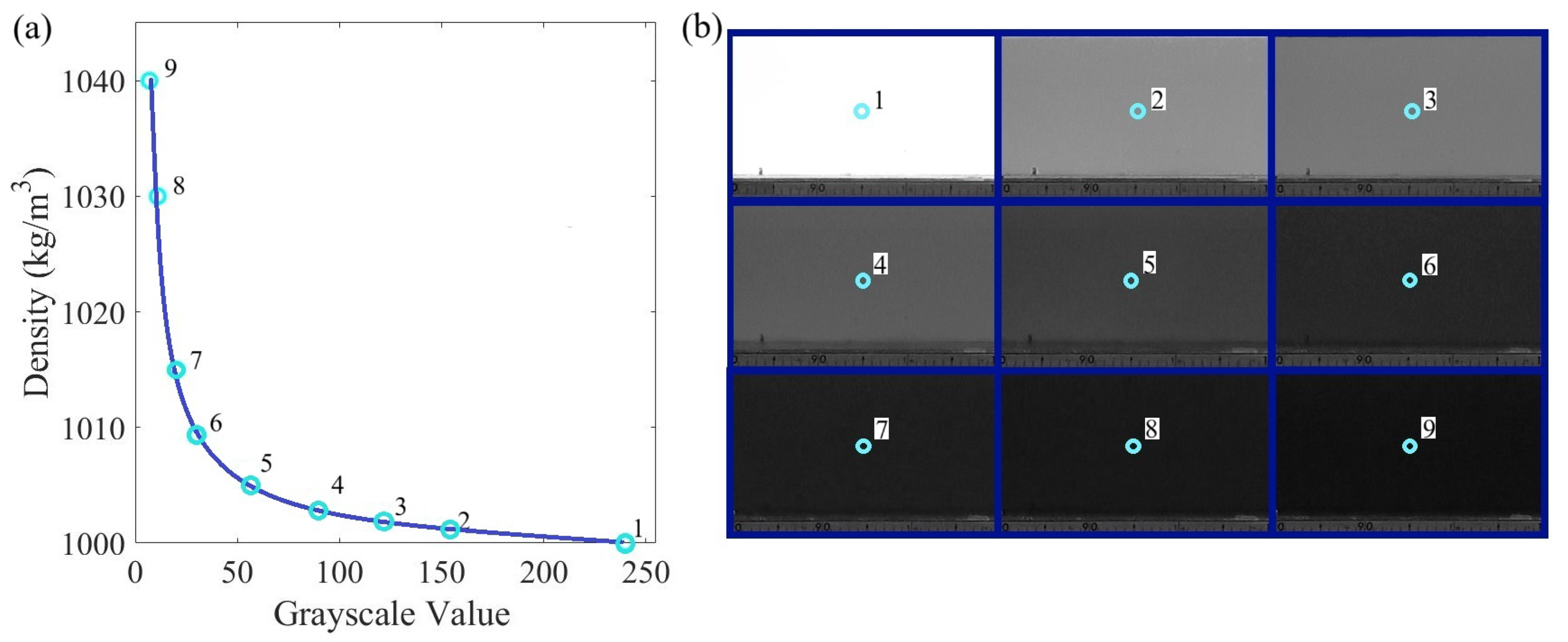
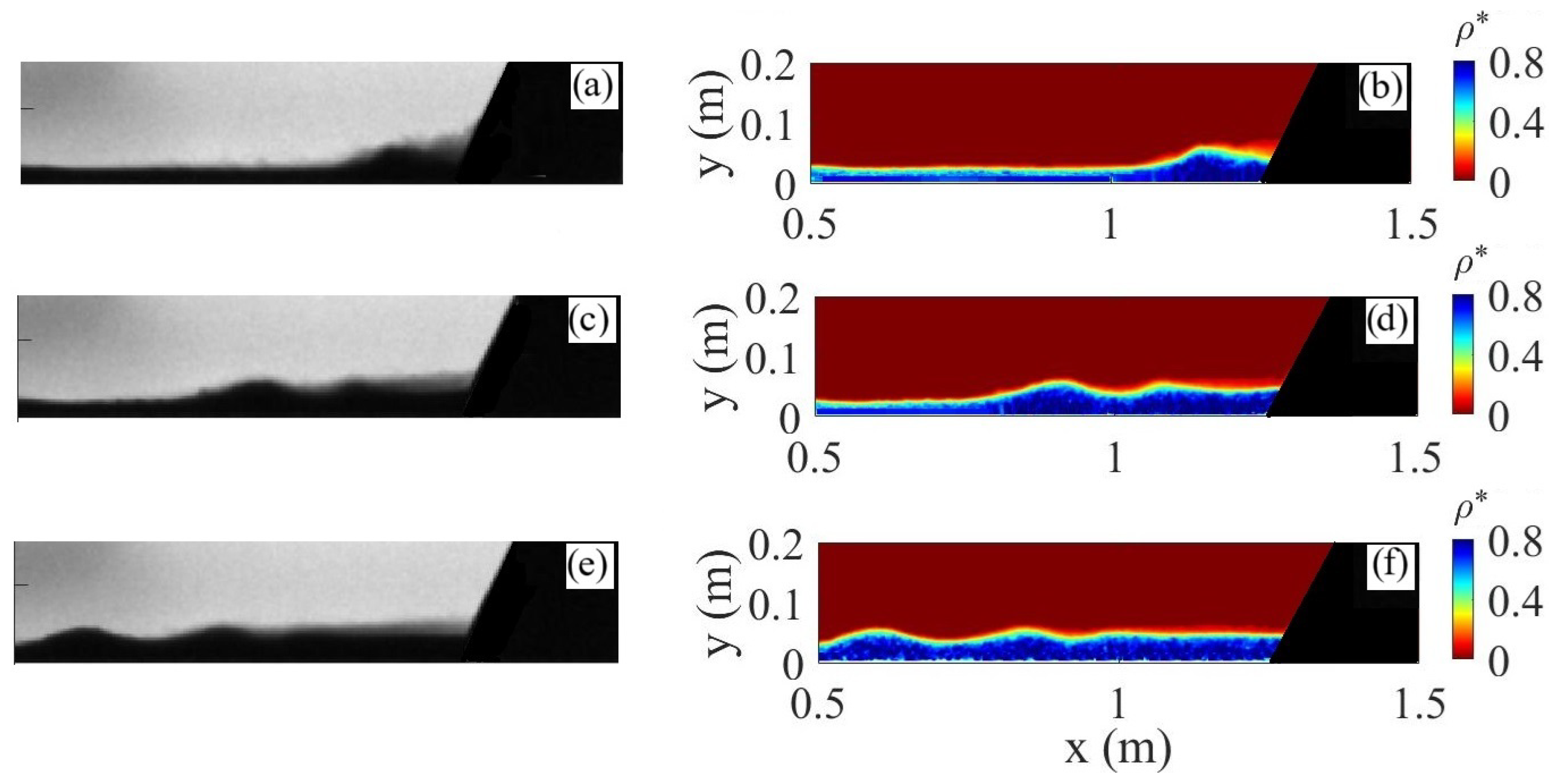


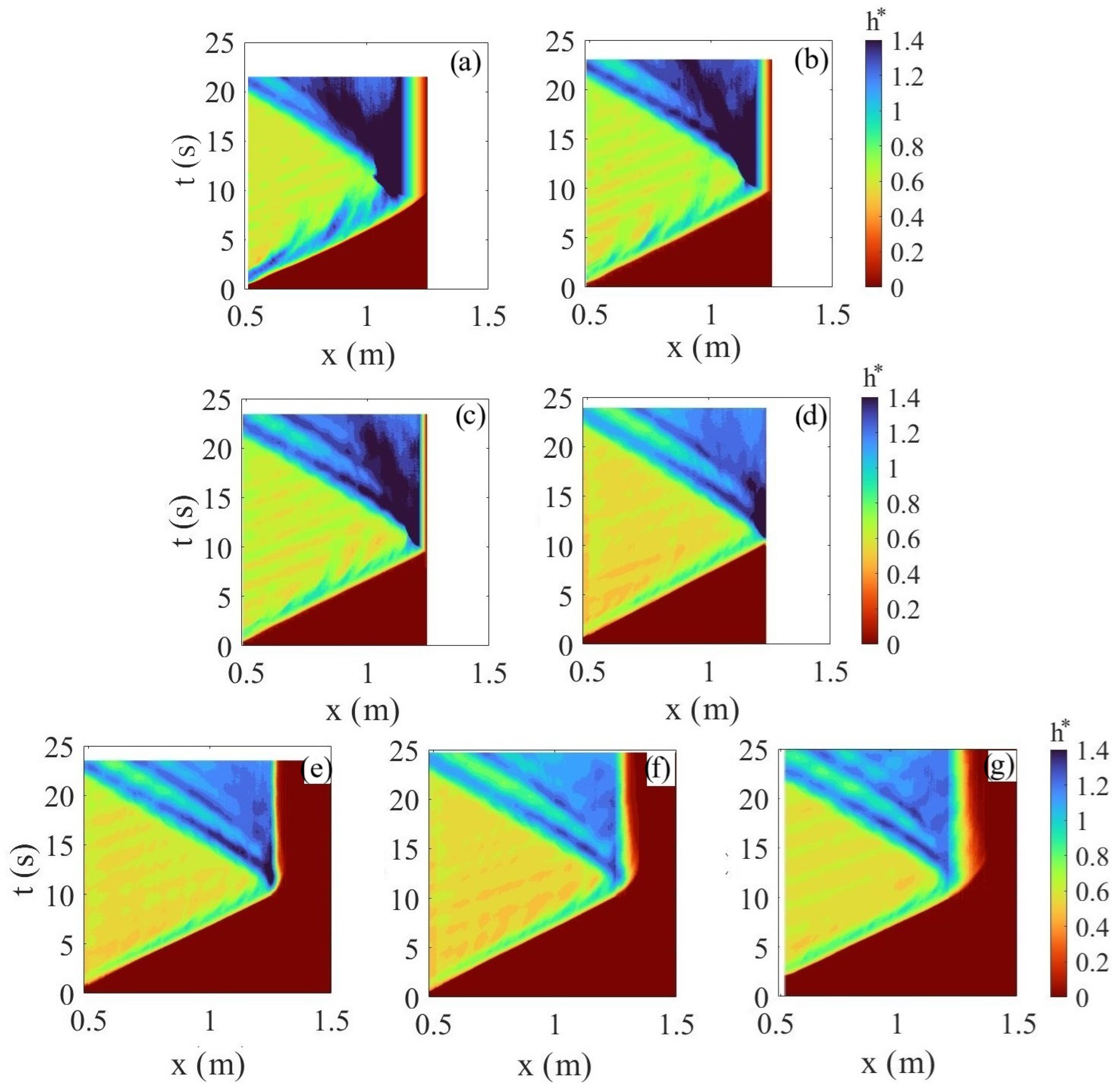
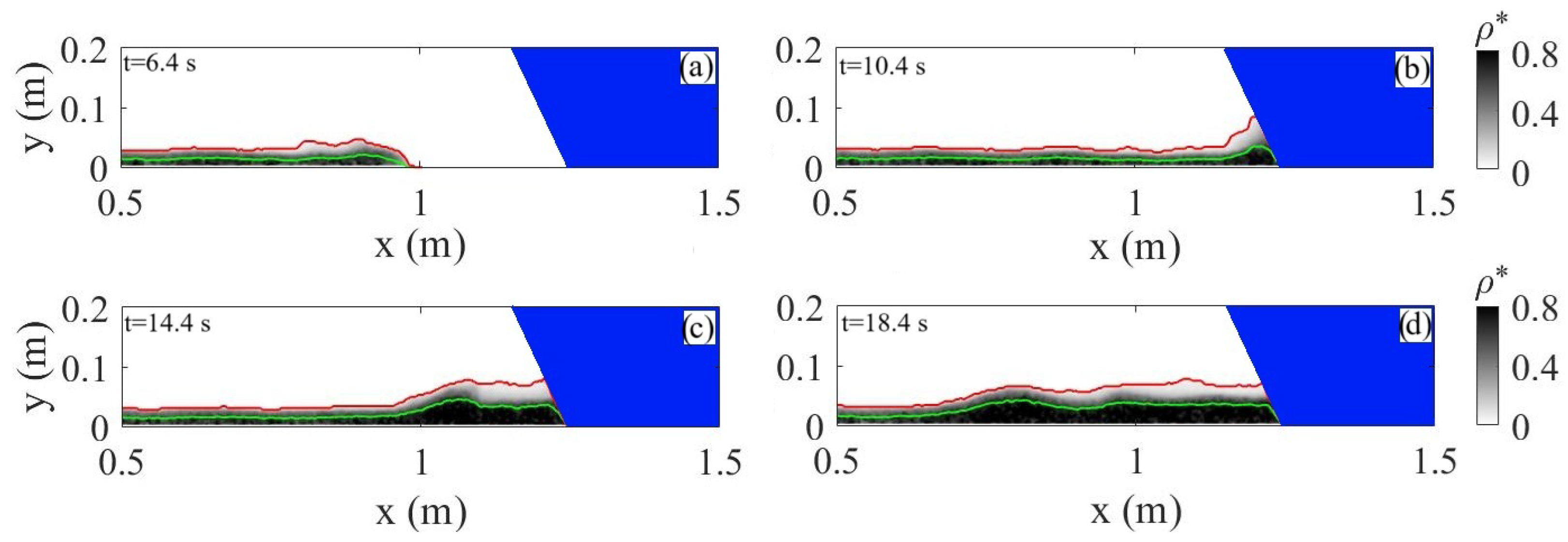
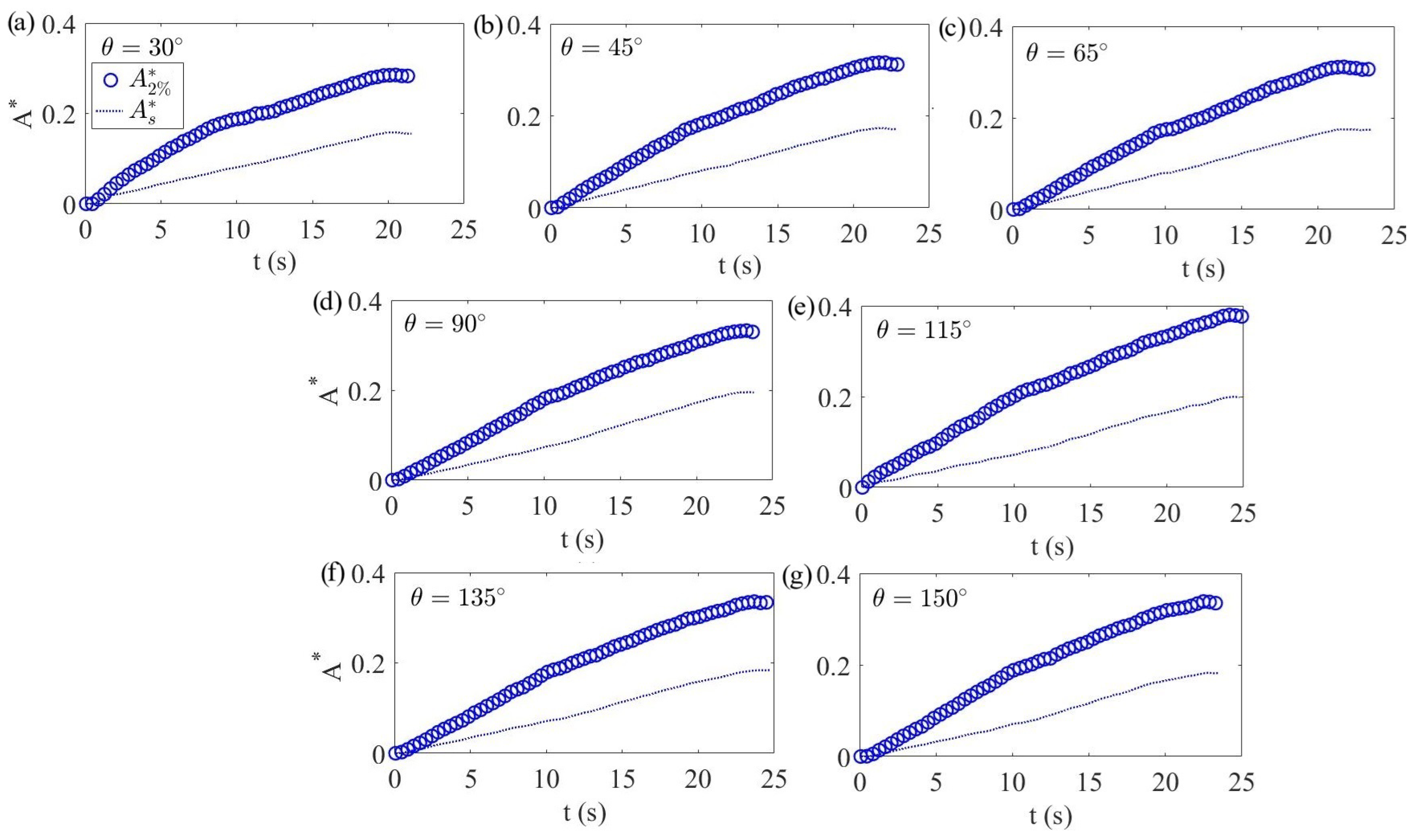
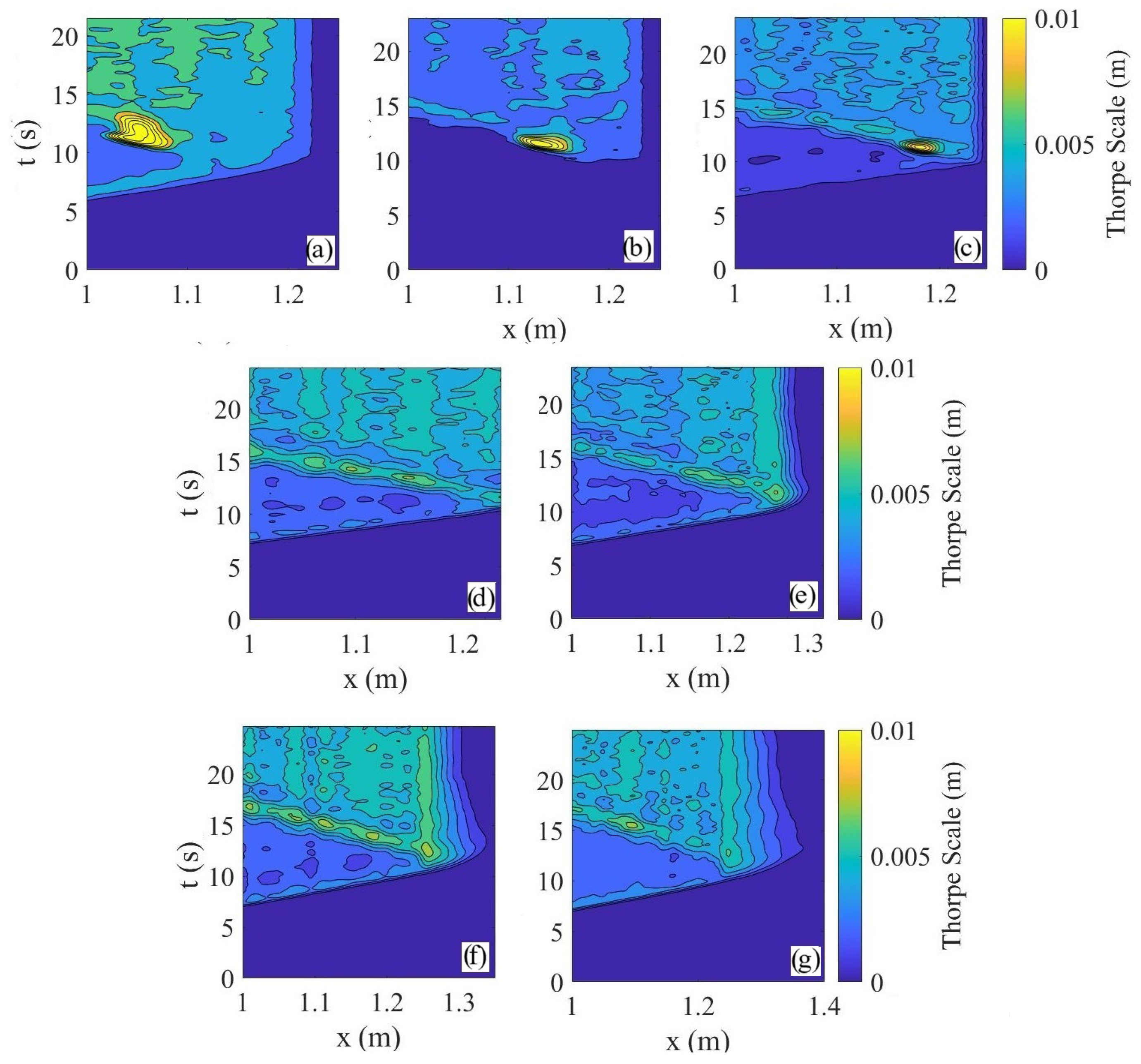

| Exp. | Fr | Re | |
|---|---|---|---|
| B30 | 0.82 | 2400 | |
| B45 | 0.82 | 2400 | |
| B65 | 0.82 | 2400 | |
| B90 | 0.82 | 2400 | |
| B115 | 0.82 | 2400 | |
| B135 | 0.82 | 2400 | |
| B150 | 0.82 | 2400 |
Disclaimer/Publisher’s Note: The statements, opinions and data contained in all publications are solely those of the individual author(s) and contributor(s) and not of MDPI and/or the editor(s). MDPI and/or the editor(s) disclaim responsibility for any injury to people or property resulting from any ideas, methods, instructions or products referred to in the content. |
© 2025 by the authors. Licensee MDPI, Basel, Switzerland. This article is an open access article distributed under the terms and conditions of the Creative Commons Attribution (CC BY) license (https://creativecommons.org/licenses/by/4.0/).
Share and Cite
Maggi, M.R.; Adduce, C. Laboratory Experiments on Reflected Gravity Currents and Implications for Mixing. Water 2025, 17, 1062. https://doi.org/10.3390/w17071062
Maggi MR, Adduce C. Laboratory Experiments on Reflected Gravity Currents and Implications for Mixing. Water. 2025; 17(7):1062. https://doi.org/10.3390/w17071062
Chicago/Turabian StyleMaggi, Maria Rita, and Claudia Adduce. 2025. "Laboratory Experiments on Reflected Gravity Currents and Implications for Mixing" Water 17, no. 7: 1062. https://doi.org/10.3390/w17071062
APA StyleMaggi, M. R., & Adduce, C. (2025). Laboratory Experiments on Reflected Gravity Currents and Implications for Mixing. Water, 17(7), 1062. https://doi.org/10.3390/w17071062









